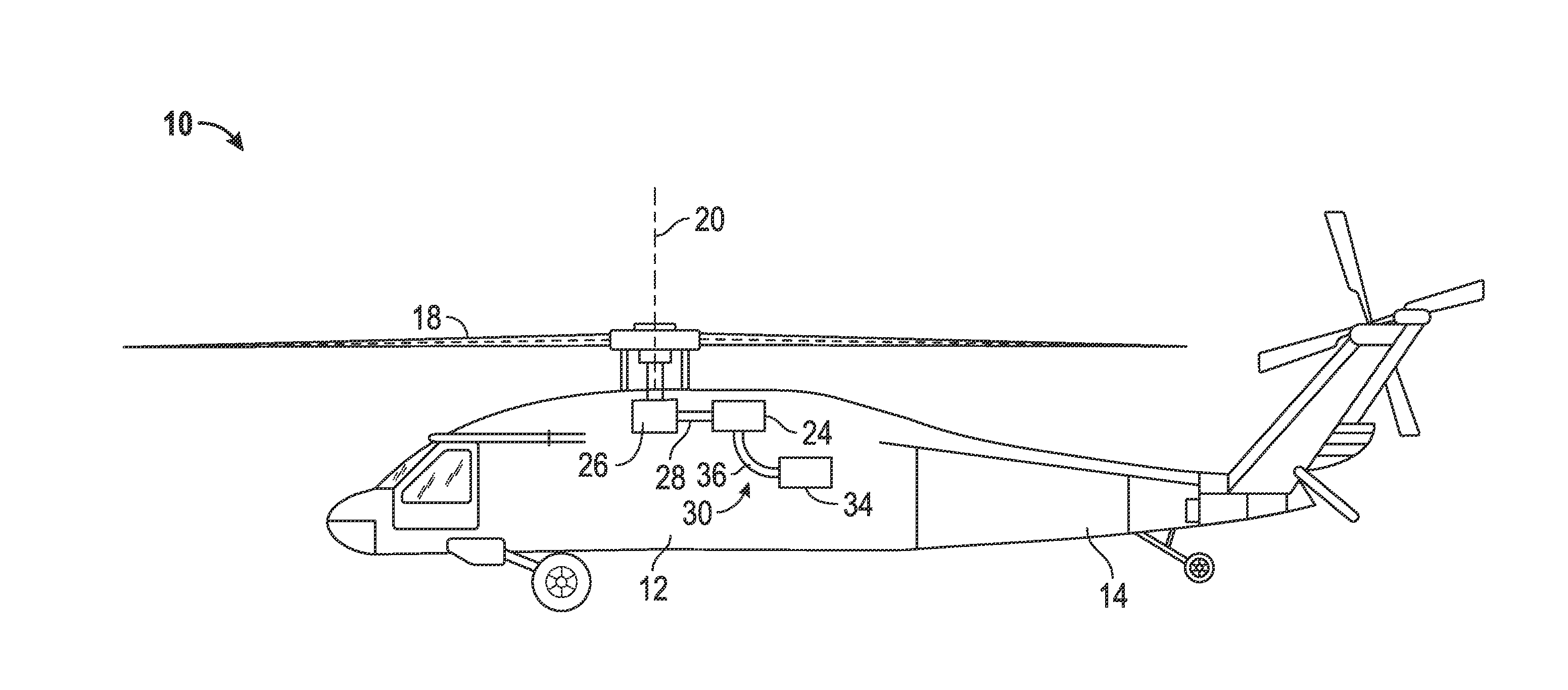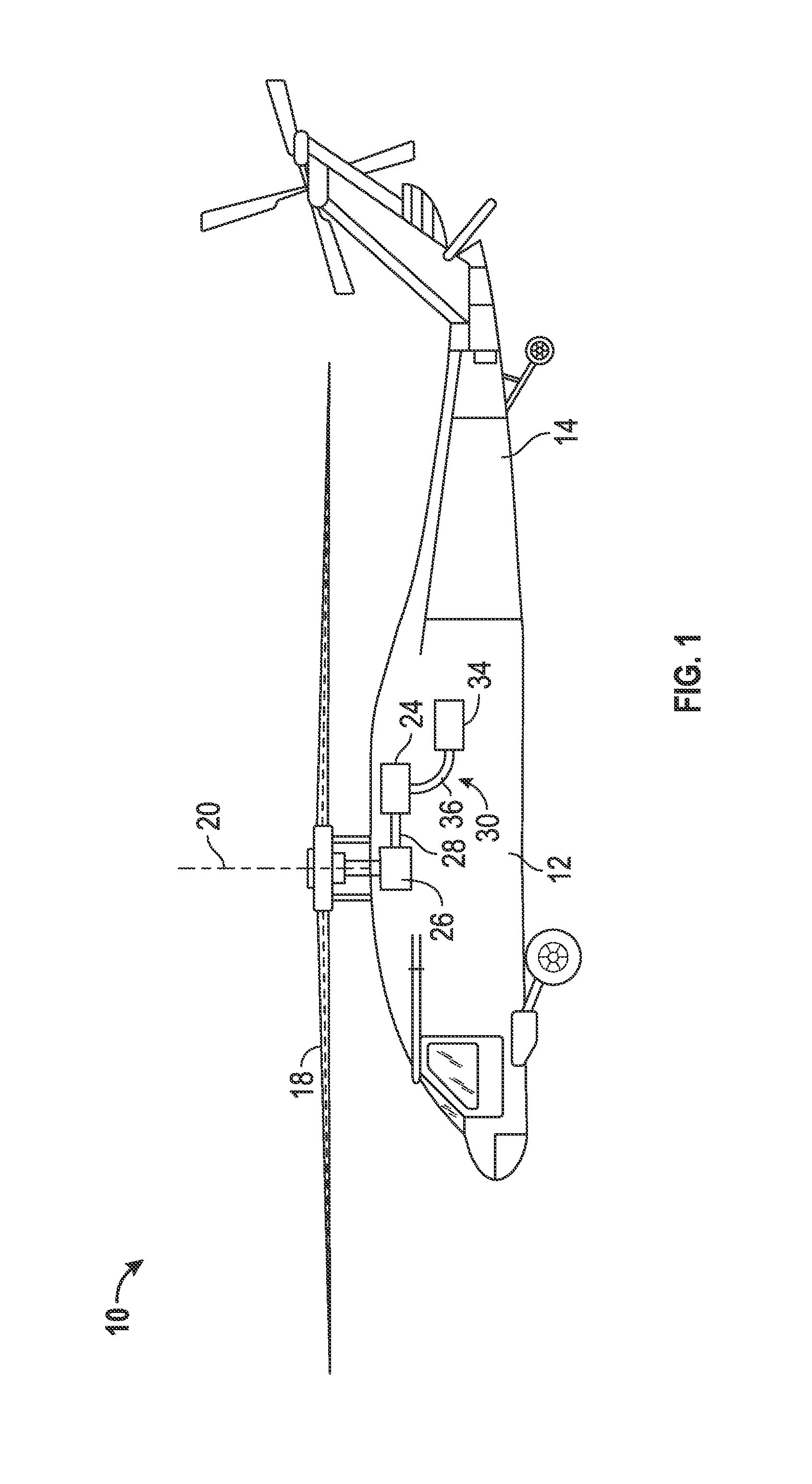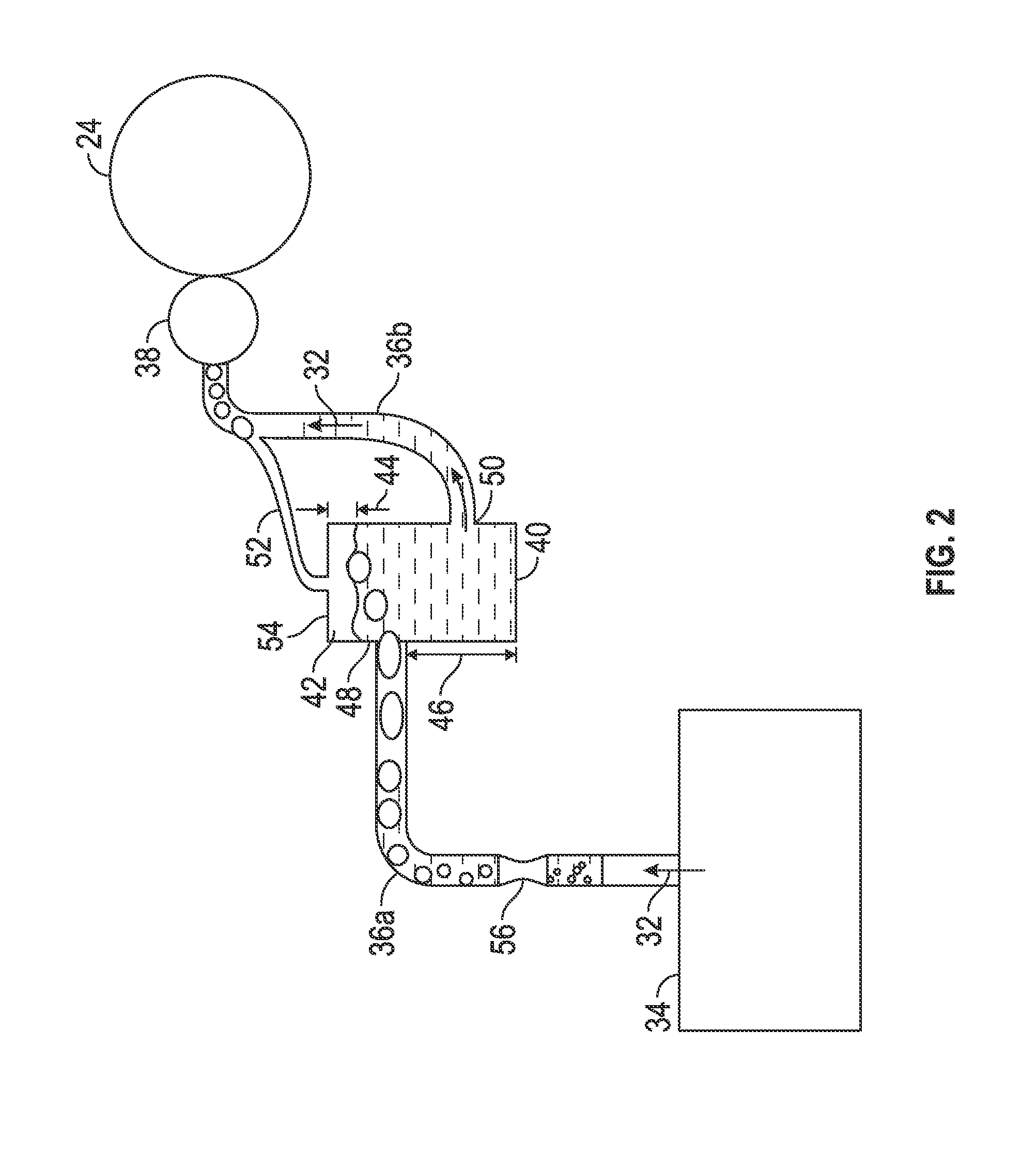Bubble collector for suction fuel system
- Summary
- Abstract
- Description
- Claims
- Application Information
AI Technical Summary
Benefits of technology
Problems solved by technology
Method used
Image
Examples
Embodiment Construction
[0019]Shown in FIG. 1 is a schematic view of an embodiment of a rotary wing aircraft, in this embodiment a helicopter 10. The helicopter 10 includes an airframe 12 with an extending tail 14. A main rotor assembly 18 is located at the airframe 12 and rotates about a main rotor axis 20. The main rotor assembly 18 is driven by a power source, for example, an engine 24, in some embodiments, a turboshaft engine, via a gearbox 26. The engine 24 is connected to the gearbox 26 via a drive shaft 28. A fuel feed system 30 provides fuel to the engine 24.
[0020]Referring now to FIG. 2, the fuel feed system 30 will be described in more detail. A flow of fuel 32 is drawn from a fuel tank 34 through a fuel line 36 toward the engine 24 via an engine fuel pump 38. The engine fuel pump 38 is a suction pump. Use of a suction pump ensures that the fuel line 36 is not pressurized during operation of the engine fuel pump 38, such that a rupture or failure of the fuel line 36 will result in air being drawn...
PUM
 Login to View More
Login to View More Abstract
Description
Claims
Application Information
 Login to View More
Login to View More - R&D Engineer
- R&D Manager
- IP Professional
- Industry Leading Data Capabilities
- Powerful AI technology
- Patent DNA Extraction
Browse by: Latest US Patents, China's latest patents, Technical Efficacy Thesaurus, Application Domain, Technology Topic, Popular Technical Reports.
© 2024 PatSnap. All rights reserved.Legal|Privacy policy|Modern Slavery Act Transparency Statement|Sitemap|About US| Contact US: help@patsnap.com










